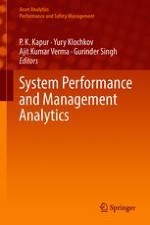2019 | OriginalPaper | Buchkapitel
Prediction of El-Nino Year and Performance Analysis on the Calculated Correlation Coefficients
verfasst von : Malsa Nitima, Gautam Jyoti, Bairagee Nisha
Erschienen in: System Performance and Management Analytics
Verlag: Springer Singapore
Aktivieren Sie unsere intelligente Suche, um passende Fachinhalte oder Patente zu finden.
Wählen Sie Textabschnitte aus um mit Künstlicher Intelligenz passenden Patente zu finden. powered by
Markieren Sie Textabschnitte, um KI-gestützt weitere passende Inhalte zu finden. powered by
